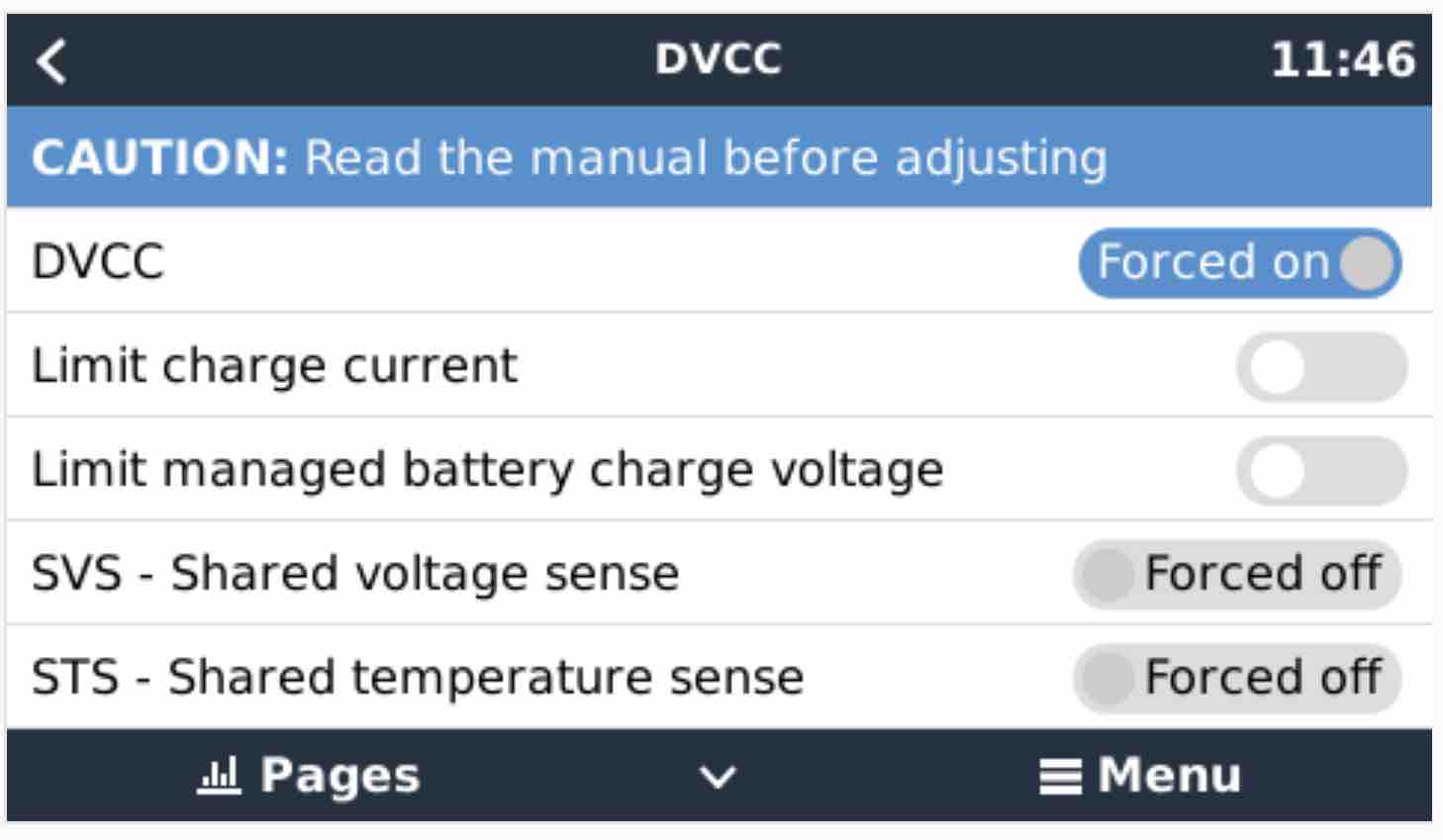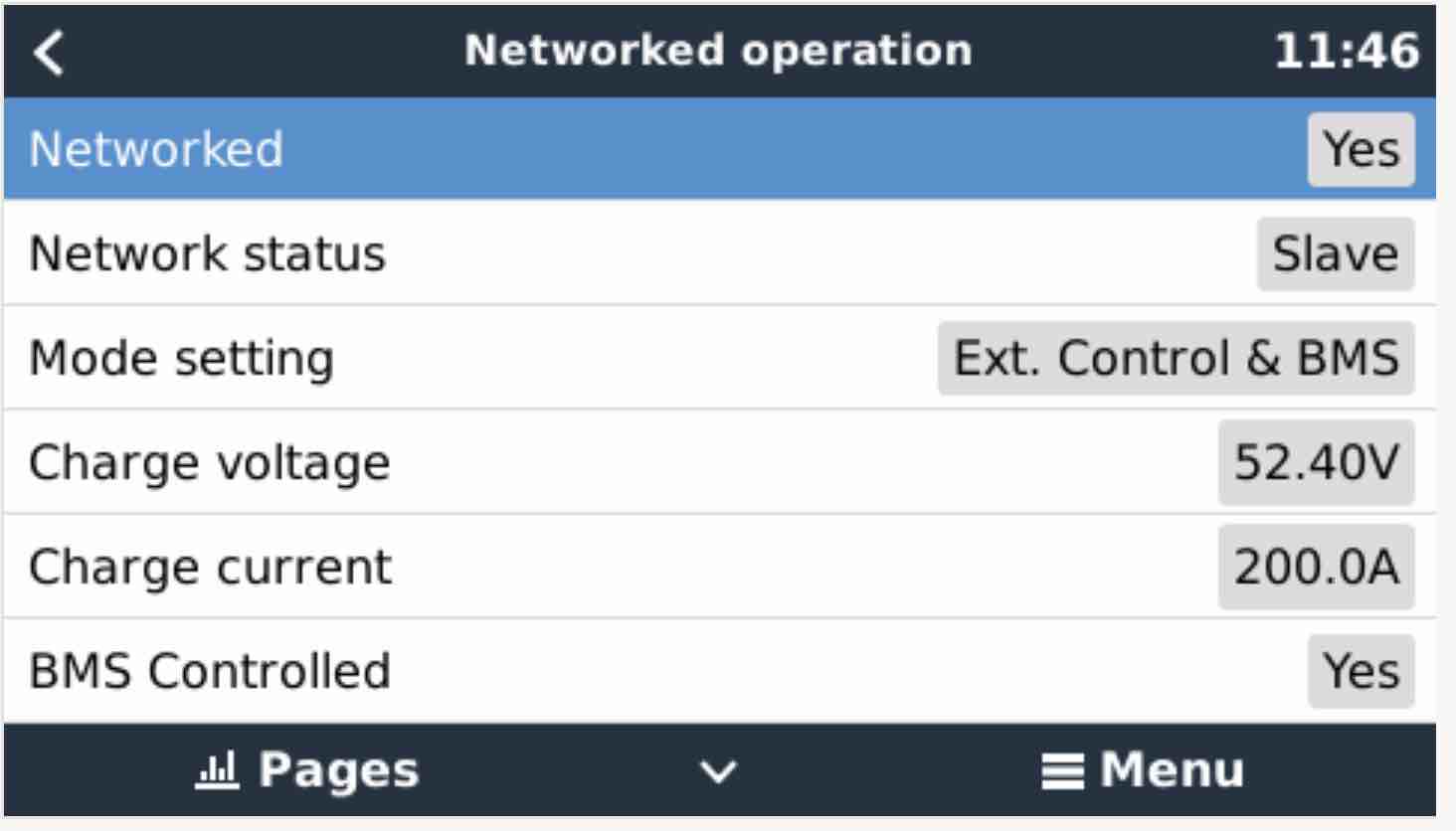I have 8 x Pylontech US5000 in my Victron system set up with DVCC and my MPPT is a SmartSolar 450/200. I was under the impression that the batteries told the MPPT how much charge they wanted. But I've noticed that when the batteries charge up to about 90%, the current going into them gets severely limited despite a) there being plenty of PV available and b) the CCL set by the batteries is much higher.
Just now I recorded the batteries throttled at 90% where only about 7 amps was going into them at 90% SOC, and the MPPT was showing only 707W coming in. So I turned on a space heater to confirm, and instantly the MPPT ramped up to 2000W to cover the load.
So does the MPPT lower the charge current independently of what the batteries are asking for? That seems to be the case.



